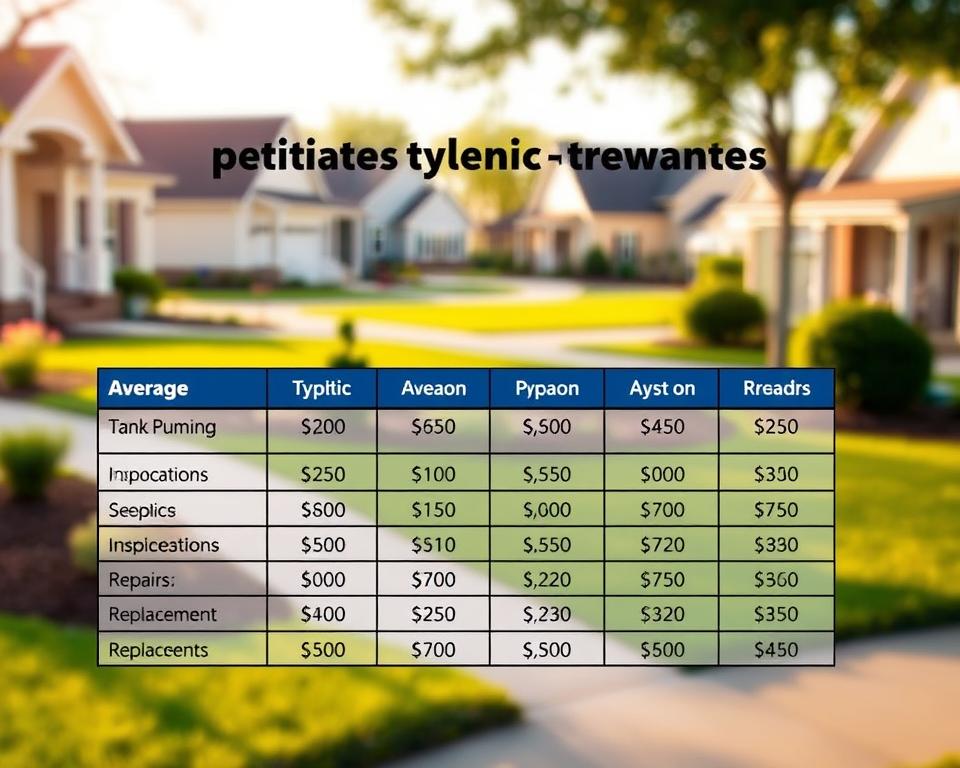Aerobic Tank Air Pump: Comprehensive Guide for Residential Users
Have you ever wondered what drives your air-treated Septic system’s efficiency? The Septic tank aerator is the often-overlooked key component integral for your system. With this resource, property owners will obtain valuable know-how on the aerator’s importance. It’s necessary for a robust, well-run Septic tank.
Understanding the significance of a Septic tank air Pump can improve your Septic system’s functionality using septic tank pumping. It also preserves your asset value and local environment. Our handbook will feature All in Sanitation, a leading Septic industry leader. They’re ready to handle your Septic aerator Pump requirements.
Core Messages
- The Septic air Pump is crucial for aerobic Septic systems.
- Maintaining your Septic system air Pump can enhance overall system function.
- Periodic reviews lengthen the lifespan of your Septic tank air Pump.
- Picking the proper Septic aerator Pump is necessary for top operation.
- All in Sanitation provides expert services for Septic air Pump requirements.
Understanding Aerobic Septic Systems
Aerobic Septic systems deliver a superior waste treatment alternative by employing oxygen. This system features aerobic bacteria living in well-oxygenated environments. These bacteria are faster in breaking down organic matter. With the help of Septic aerator Pumps, these systems maintain a steady oxygen supply, improving the waste decomposition process.
These systems stand out in reducing sludge buildup, because of the effectiveness of aerobic bacteria. This cut in solid waste means minimal cleaning and tank Pump-outs is required less often. Additionally, they successfully handle wastewater, producing little to no smell. This ensures a more pleasant environment for homeowners and the community together.
To confirm these systems work successfully, it’s essential to understand the key Septic system components. These include the Septic tank, oxygenation chamber, and effluent Pump. Each element plays an important part, especially the air Pump. It forces oxygen into the tank, essential for the aerobic bacteria’s performance.
Importance of the Septic Air Pump
The Septic air Pump is pivotal in the performance of aerobic Septic systems. It functions like the system’s “oxygen source,” providing the necessary oxygen needed. This oxygen allows aerobic bacteria to prosper and break down waste properly. If the Pump malfunctions, the system’s effectiveness declines, bringing about sludge accumulation and possible odors.
Such issues can interfere with Septic system operations and create environmental hazards. By understanding how critical the Septic air Pump is, homeowners can move early. They can ensure its optimal function through regular maintenance. This prevents failures, avoids costly repairs, and keeps the aerobic system’s well-being.
Major Benefits of Using a Septic Air Pump
Utilizing a Septic air Pump greatly improves the effectiveness of Septic systems. Septic air Pumps are essential as they fast-track the digestion of waste. This is done by oxygenating the treatment process, supporting aerobic bacteria growth. These bacteria are necessary for successful waste treatment.
They’re also helpful in reducing foul smells. Due to more active aerobic processes, waste decomposes faster, thus diminishing odors. This ensures better surroundings for homeowners.
Another valuable benefit is the reduction in sludge formation. Consequently, tanks need less frequent Pumping, reducing both money and time. Improved processing not only cuts expenses but also lengthens the lifespan of the drain field.
Proper care of these Pumps diligently means minimal repair costs and satisfying regulatory standards. Thus, the pluses of Septic air Pumps are not only for homeowners. They also contribute to environmental health by raising waste management practices.
| Benefit | Description |
|---|---|
| Fast Waste Breakdown | Heightened aerobic activity hastens the decomposition process. |
| Minimized Odor Emissions | Optimized treatment efficacy leads to fewer odors. |
| Reduced Sludge Buildup | Fewer Pumping and maintenance are called for. |
| Extended Drain Field Life | Better treatment ensures a healthier drain field. |
| Cost Savings | Lower chance of repairs and regulatory compliance cost. |

Selecting the Best Septic Air Pump
Picking the correct Septic air Pump is critical for an well-running aerobic system. Homeowners must consider various factors for the proper choice. The volume of the tank and the airflow requirements matter greatly the Pump’s efficiency.
To select well, it’s useful to know the air Pumps available. There are mainly two types: linear diaphragm Pumps and rotary vane Pumps. Each comes with specific strengths, which should be matched with your home’s particular demands and operational profile.
Energy efficiency also is a factor. Picking a Pump that reduces energy use while providing the needed airflow can offer significant savings. Assistance from All in Sanitation experts can be priceless. They help ensure the Pump you choose suits your system’s requirements seamlessly.
Typical Classes of Septic Air Pumps
Homeowners can decide more effectively by recognizing the multiple Septic air Pumps available. There are mainly two types: diaphragm Pumps and rotary vane Pumps. Each has its unique functions and benefits.
Diaphragm Pumps, valued for their silent operation, are favored for residential Septic systems. They maintain energy efficiency while supplying consistent airflow. Their constant performance matches smaller systems, meeting the needs of many homeowners.
Rotary vane Pumps, however, are ideal for bigger or commercial systems. These Pumps offer higher capacity, necessary for handling bigger loads. Their durable build ensures efficient operation in heavy-duty Septic systems.
| Type of Pump | Best Use | Advantages |
|---|---|---|
| Diaphragm Pumps | Residential Systems | Quiet operation, energy-efficient, reliable air flow |
| Rotary Vane Pumps | Larger or Commercial Systems | Powerful performance, high capacity, durable construction |
Knowing the distinctions in Septic air Pumps is important for upgrades or replacements. Each Pump type offers distinct traits to fulfil various needs. This provides optimal performance for any system.
Clues Pointing to a Septic Air Pump Replacement
Homeowners must monitor Pump failure signs in their Septic systems. Some clues point towards the need for a Septic air Pump replacement. These keep the system running smoothly. Catching these in time stops serious issues.
Signs of potential problems include:
- Unusual noises from the Pump, like grinding or vibrating, might show internal damage.
- A clear lack of air output means the Pump isn’t functioning properly, harming efficiency.
- Regular electrical problems, such as power trips or flickering lights, could point to overloading.
- Visible damage on the Pump unit, with breaks or leaks, demands quick action.
- Offensive smells in the yard often reveal a compromised Pump, demonstrating ineffective effluent aeration.
Finding these signs early heads off expensive repairs or total system failure. Carrying out routine inspections helps spot these issues. It also clarifies if you require a new Septic air Pump.
Upkeep Advice for Your Septic Air Pump
For an effective Septic air Pump, routine upkeep is necessary. This ensures that your system works smoothly. Homeowners can follow several straightforward care strategies for peak results.
Half-yearly, perform a comprehensive inspection for wear or damage. It is also important to change the filters as indicated. This avoids clogs that could hurt efficiency.
The Pump should be placed on a firm base to reduce vibrations, which could affect it over time. A protective cover is essential too. It guards against debris and water, preserving the Pump’s functionality.
Good upkeep can greatly prolong the life of your Pump. In turn, this benefits the Septic system’s performance collectively.
| Maintenance Task | Frequency | Benefits |
|---|---|---|
| Inspect Pump for damage | Every 6 months | Detects damage sooner |
| Replace filters | As needed | Enhances operation |
| Check surface stability | Annually | Reduces vibrations |
| Clear debris around Pump | Monthly | Stops blockages |
Fitting Your Septic Air Pump
Correct installation of your Septic air Pump is vital for its optimal operation. To start, pick a secure, moisture-free area for placement. The chosen spot should safely support the Pump’s weight without strain.
To properly mount your Pump on your own, use the following guidelines:
- Collect all necessary items, including the Pump, a power source, and hose fittings.
- Consult the manufacturer’s guidelines before kicking off your installation.
- Confirm every connection is sealed to avoid air leaks that impact performance.
- After assembly, conduct a test to ensure the system works as intended.
If the installation process appears difficult, get in touch with All in Sanitation. Their professionals can avoid common errors, ensuring your setup complies with relevant safety requirements.
Advantages of Using All in Sanitation for Your Septic Air Pump Services
When selecting a Septic service provider, the choice is key. All in Sanitation distinguishes itself by offering dependable Septic air Pumps. They cater to diverse homeowner requirements with a comprehensive selection of quality products. This makes sure customers secure an exact match for their Septic systems.
What truly separates All in Sanitation is not solely their diverse product lineup. Their dedication to exceptional customer service is equally significant. Homeowners get knowledgeable support, helping them choose trusted Septic solutions. This partnership is crucial to tailor each solution to fulfil specific needs.
All in Sanitation also emphasizes aftercare to secure lasting satisfaction. Their commitment reaches beyond the initial sale. They supply ongoing support to preserve Septic systems functioning optimally for the long haul.
Financial Aspects for Septic Air Pumps
Knowing the expenses linked to Septic air Pumps is important for homeowners with aerobic Septic systems. At first, one faces the purchase price, which includes the Pump and associated accessories. Installation expenses fluctuate, depending on the system’s complexity and any adjustments required.
Ongoing upkeep forms an additional cost layer. Consistent assessments can fend off bigger issues, in the long run yielding savings. Homeowners should allocate money for Septic maintenance to retain the Pump’s effectiveness and life expectancy. Such planning avoids expensive repairs later on, illustrating the benefit of proactive maintenance.
| Cost Component | Average Cost Range |
|---|---|
| Septic Air Pump | $500 – $1,200 |
| Installation | $300 – $800 |
| Annual Maintenance | $150 – $400 |
| Potential Repair Costs | $1,000 – $5,000 |
Breaking down Septic air Pump expenses into separate parts supports homeowners in financial preparation. This comprehensive approach provides the system’s smooth operation and their comfort.
In Summary
For homeowners with aerobic Septic systems, looking after Septic units is vital. The right Septic air Pump boosts waste processing and prolongs your system’s life. Committing to ongoing care and quickly fixing issues sidesteps high expenses and disruptions.
Selecting a Septic air Pump demands careful thought. This guide covered how to decide intelligently about installation and replacement. With All in Sanitation’s guidance, you can manage your Septic systems’ complexities assuredly.
Maintaining your Septic air Pump promotes your system’s functionality and longevity. It secures a smooth and effective operation over time. Don’t forget, your home’s wastewater management is strongly influenced by consistent upkeep.
